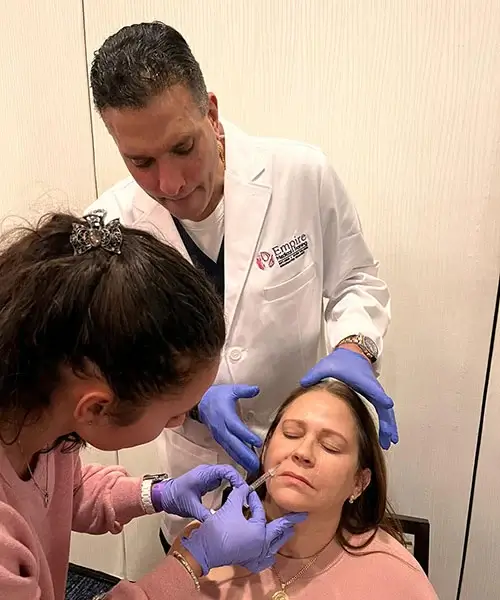Redefining Radiance: Innovative Solutions for Acne Problems
By Dr. Stephen Cosentino
PRESIDENT OF EMPIRE MEDICAL TRAINING
Millions of Americans suffer from acne. Many more experience lingering effects from prior acne breakouts, such as acne scars. These problems can persist for years after the most recent active breakout.
The good news for America’s acne sufferers is that acne treatment options have expanded considerably in recent years, driven by a wave of new, innovative approaches to acne treatment.
This is welcome news, especially for those suffering from acne-related keloid scars, which feature raised scar tissue that’s even more unsightly than “regular” acne scars. In this post, we’ll focus on the exciting world of keloid acne scar treatments and offer some general guidance for patients.
Keloid Acne Scars: What to Know
Keloid scars are raised patches of scar tissue that form to protect damaged areas of skin. People often develop keloids over burns or persistent acne outbreaks, but they can occur as the skin heals around other types of wounds as well.
Younger people with darker skin are at higher risk of developing keloids than older people and those with lighter skin. But keloids affect a broad cross-section of Americans.
Keloid Acne Scar Treatment Options: What Works, What Doesn’t
Acne-related keloid scar treatment options range from noninvasive in-home treatments (many of which don’t work very well) to surgical removal. Here’s what to know about each.
Home Keloid Treatments
Most patients start off with home keloid remedies that cost little and have few side effects. The downside is that some of these treatments aren’t as effective as clinical alternatives:
- Avoiding sun exposure, which can aggravate keloids
- Wearing loose-fitting clothing that limits irritation
- Using over-the-counter medications, such as silicone gel or topical corticosteroid cream
- Applying skin care products with active ingredients such as salicylic acid and benzoyl peroxide, which may also treat acne outbreaks in progress
Topical Steroids
Your dermatologist may recommend prescription-strength topical corticosteroids or other topical prescription remedies. These can also be administered at home but need a medical provider’s sign-off for initial fills and refills. Generally, they work best on small keloids.
Injected Steroids
Corticosteroid injections may reduce the size and unsightliness of acne-related keloid scars. They must be administered by a trained medical professional and repeated on a recurring schedule for best results. Although they have fewer risks and potential side effects than oral steroids, they’re also not appropriate for all patients.
Other Minimally Invasive Treatments
Many patients are good candidates for other minimally invasive keloid scar treatments, some of which were developed only recently.
When considering any of these options, work only with providers who’ve had comprehensive training in the latest keloid acne scar treatment protocols. Avoid cosmetic treatments that may be contraindicated for keloid scar patients, such as Botox injections, microneedling, and microdermabrasion (which can remove dead skin cells but may aggravate existing scars).
Surgical Intervention
The most drastic treatment option for acne-related keloid scars is to have them surgically removed. The American Academy of Dermatology doesn’t recommend surgical intervention for minor keloid scars, and there’s a significant risk that they’ll return after removal. But it may be the best choice for patients with large, unsightly scars.


